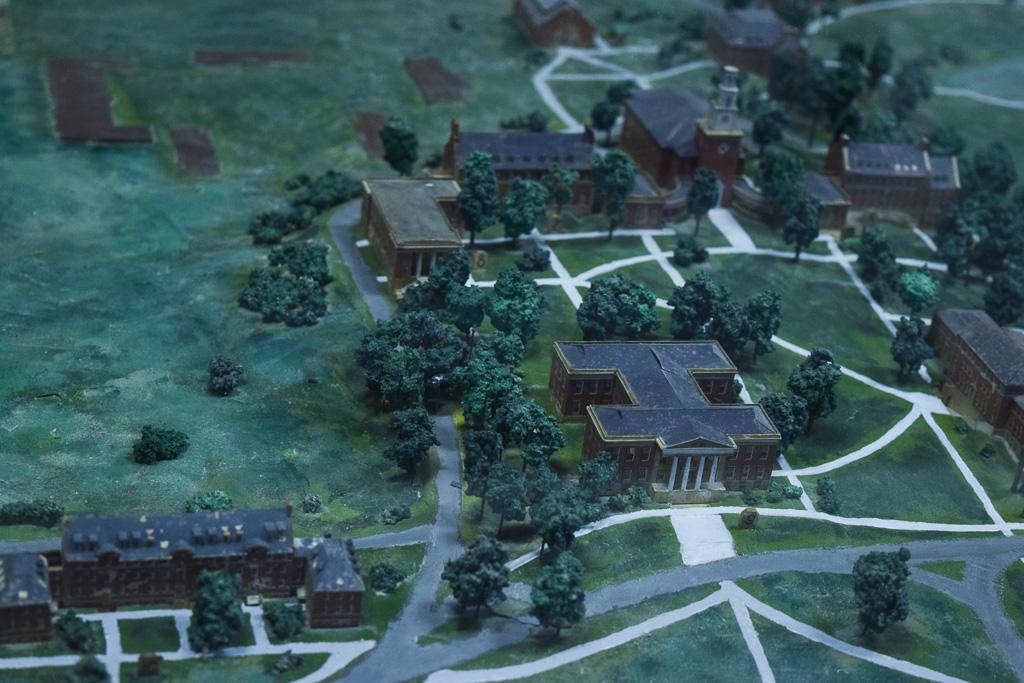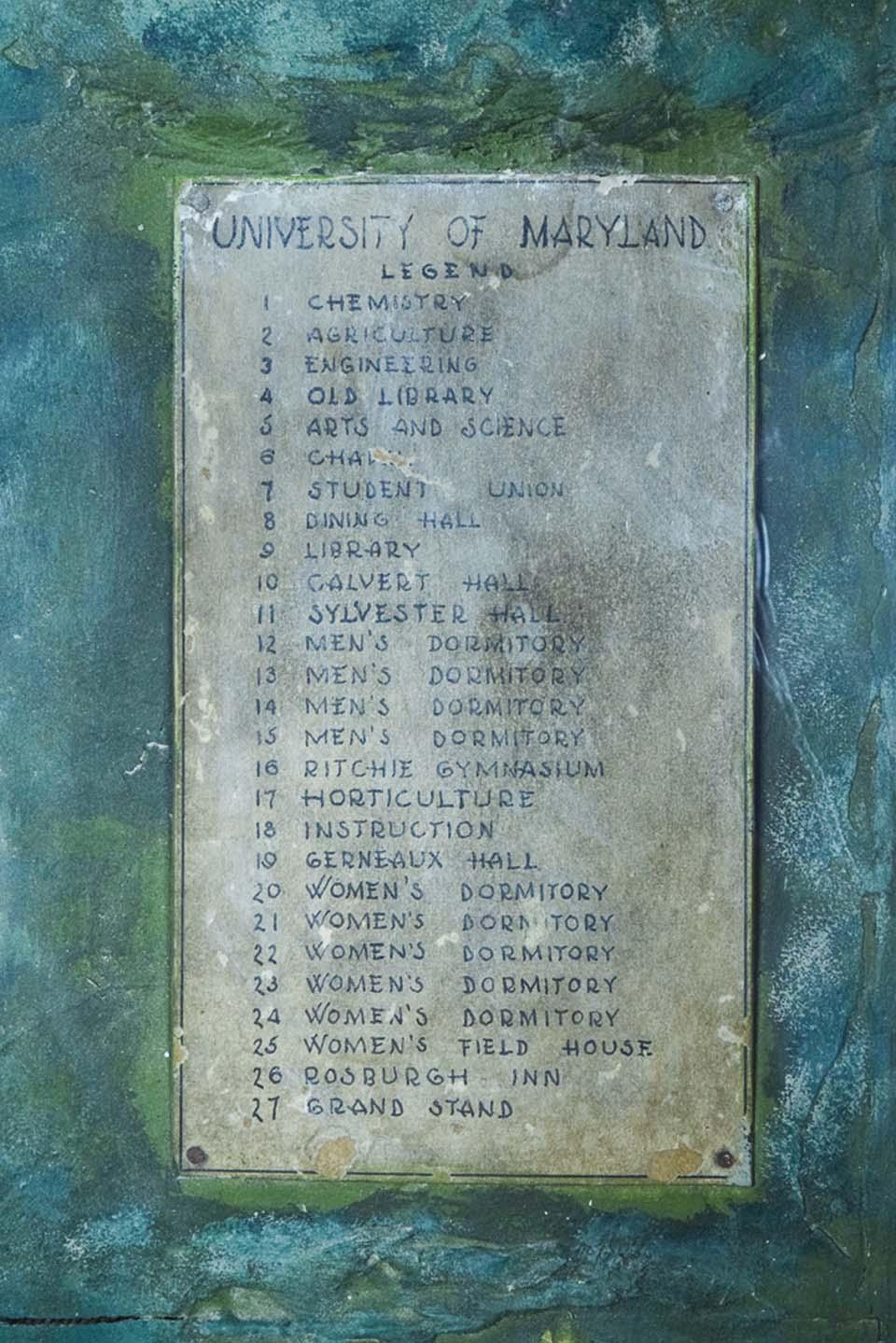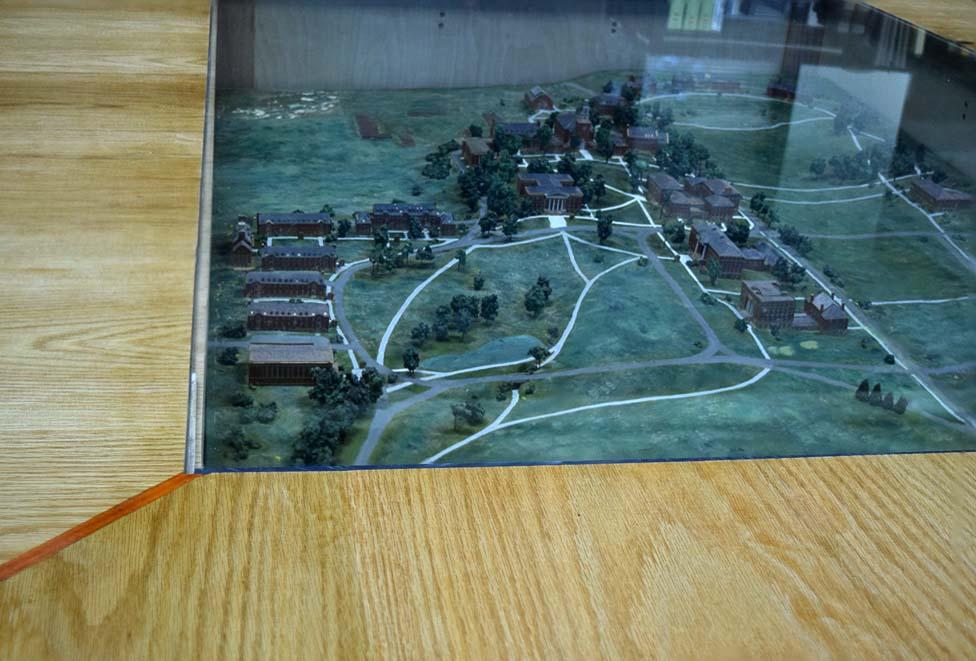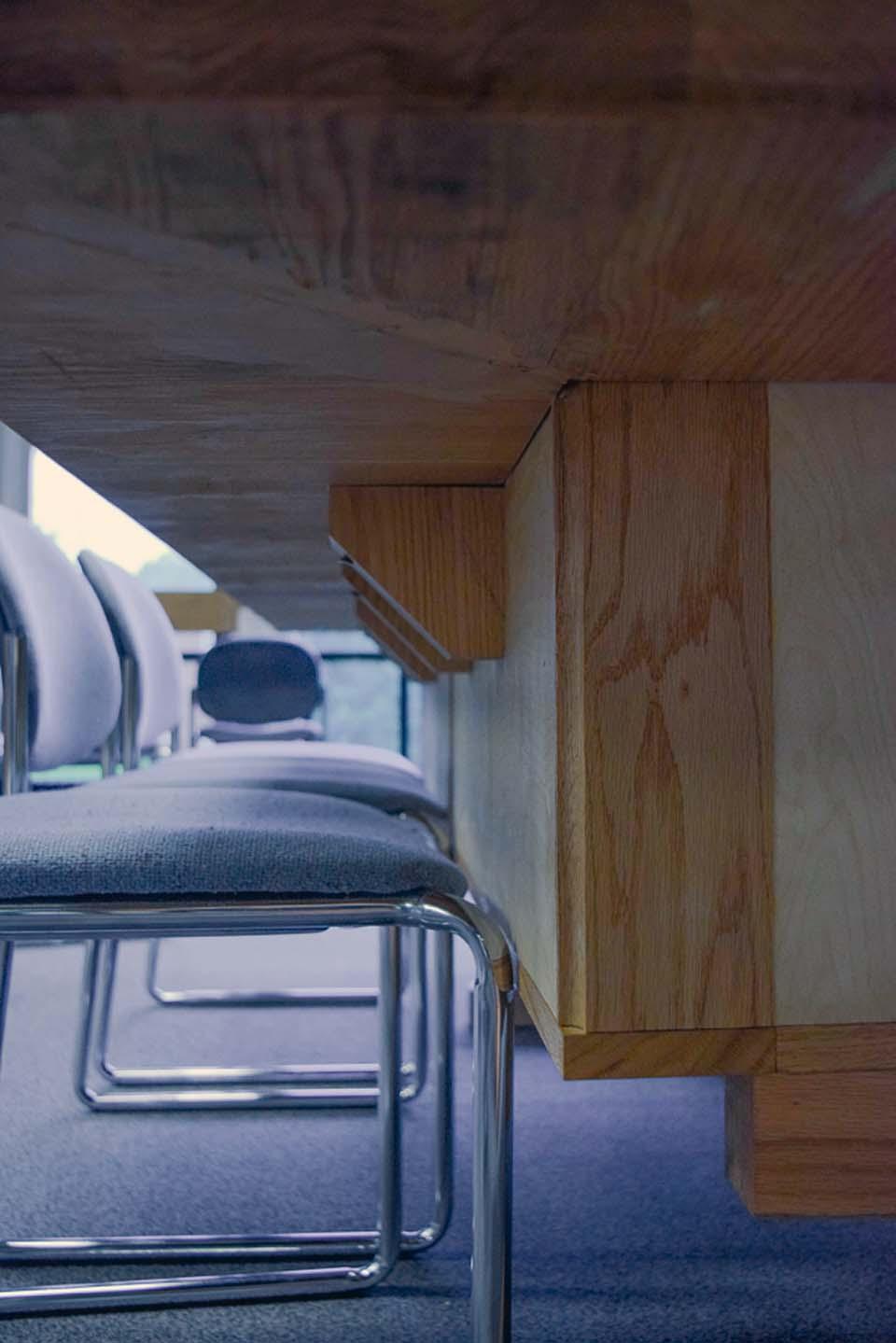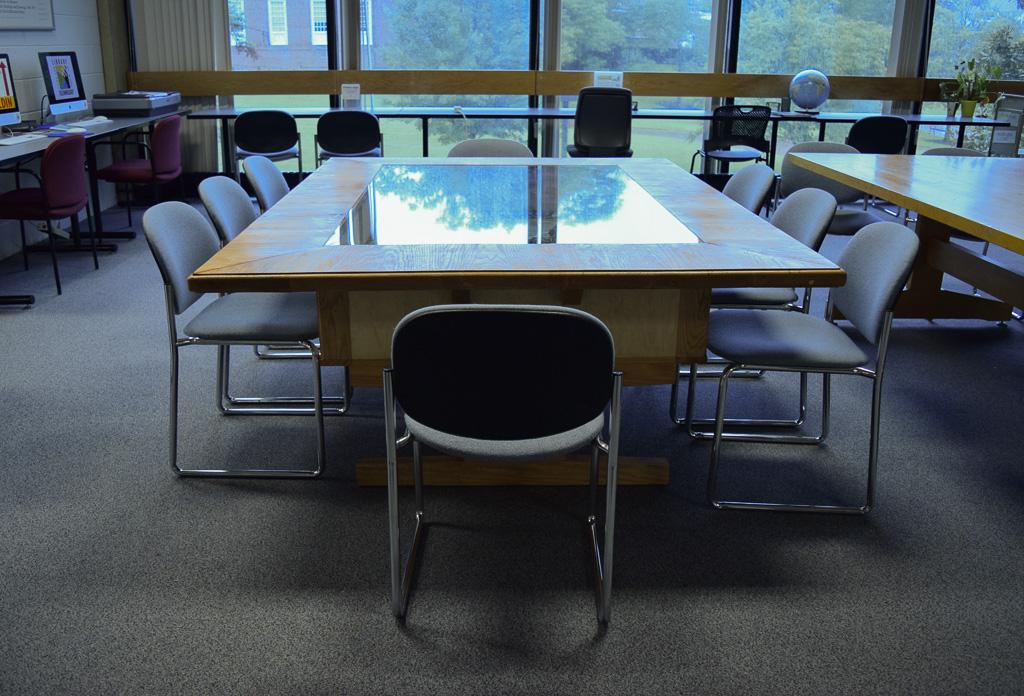On October 13, 2014, as preparations were being made for construction of the new Edward St. John building, a 1931 model of the UMD campus, discovered in Holzapfel Hall, was transported to the School of Architecture, Planning and Preservation (MAPP) for restoration.
The model, said to have been done by Bertram L. Keyes, is rumored to have been one of three final submissions for redesign and rebuilding the campus following the Great Fire of 1912. Made of particle board, plaster, sawdust, glue, paint and model wood for the buildings, it had suffered extensive water damage over the years and was now covered in mold, bird droppings and bat guano.
Because no one knew what to do with the piece, it landed in the school’s fabrication lab/wood shop—known as the FabLab—where resident manager Joe Largess, began the painstaking restoration process by cleaning, gluing and rebuilding what was something like a puzzle.
The process began by attempting to clean without destroying, testing for lead paint first—there was none—then going over the model carefully with diluted vinegar to kill any mold. The buildings had to be matched for color and placed where they belonged. Loose pieces of plaster on the surface were removed, then fresh plaster was added, sanded down and painted, sidewalks were placed back in and trees—made of sawdust and glue—were re-planted by placing them on heads of nails. There are a few small places that remain a mystery… is that a railing or a stair?
The restored model contains a key to building names as well as an 8-inch by 8-inch corner section that shows what it looked like before the restoration. It shows a pond where McKeldin now sits as well as a few buildings that remain on today’s campus.
Largess said, “Everything—except for a few small parts, like a roof or a small piece of a building and the bleachers—remains as close to the original as possible.”
Finally, following the restoration, there was no space available on campus to house the historic model. Thanks to efforts by a number of people at MAPP, the model has a new home in the Architecture Library, living in a custom-built structure with a plexiglass cover that serves as an additional table for library patrons.



